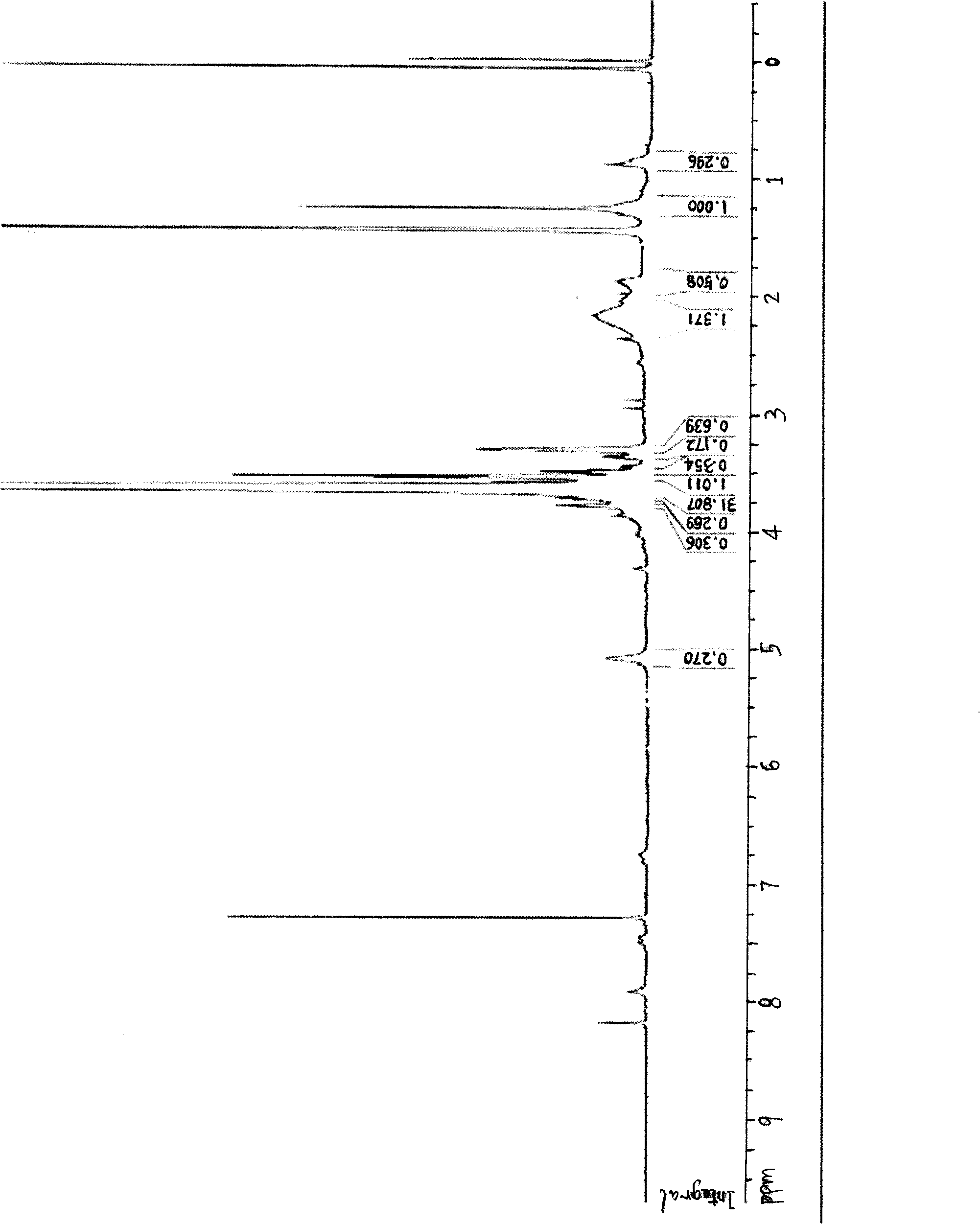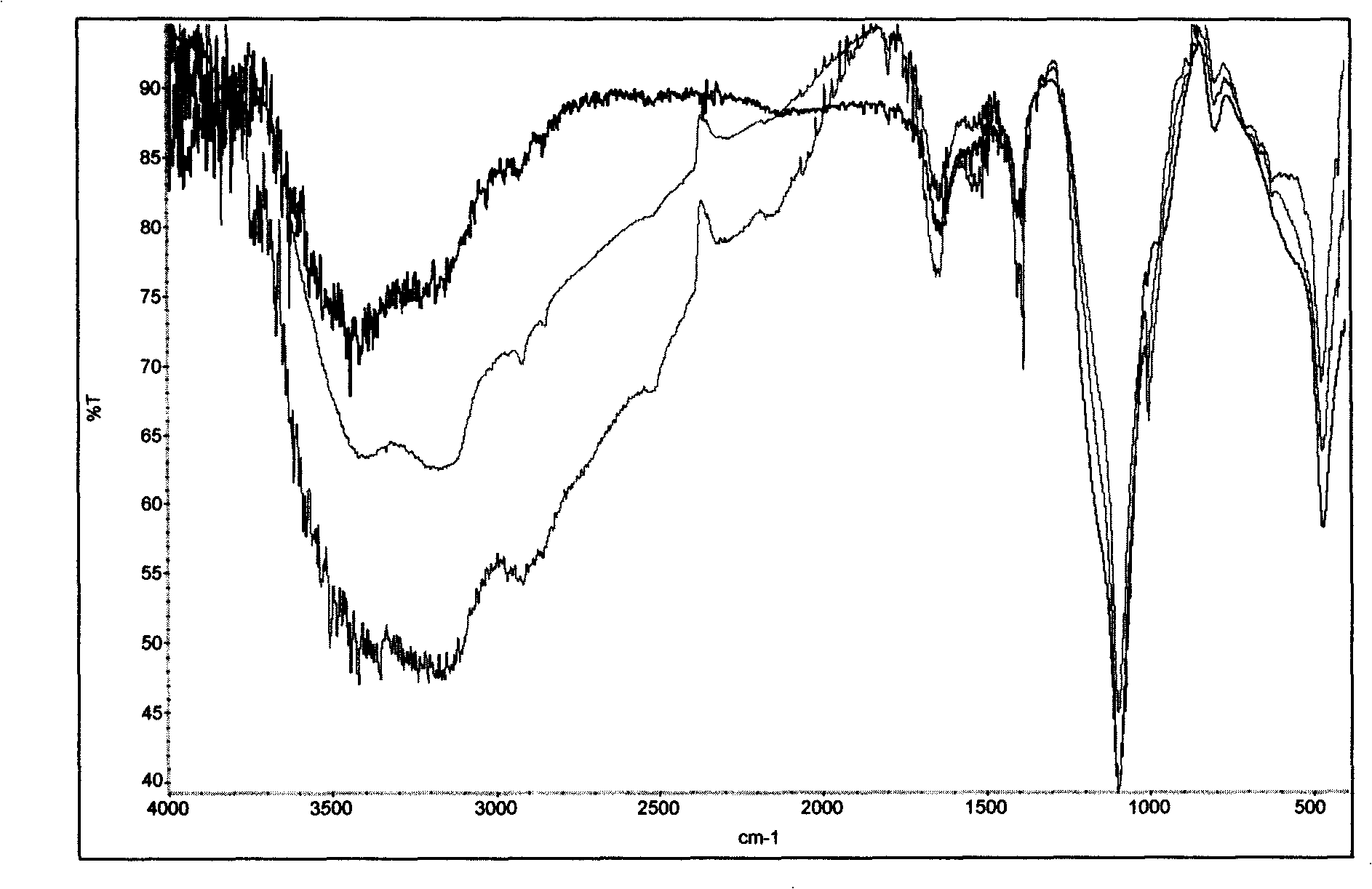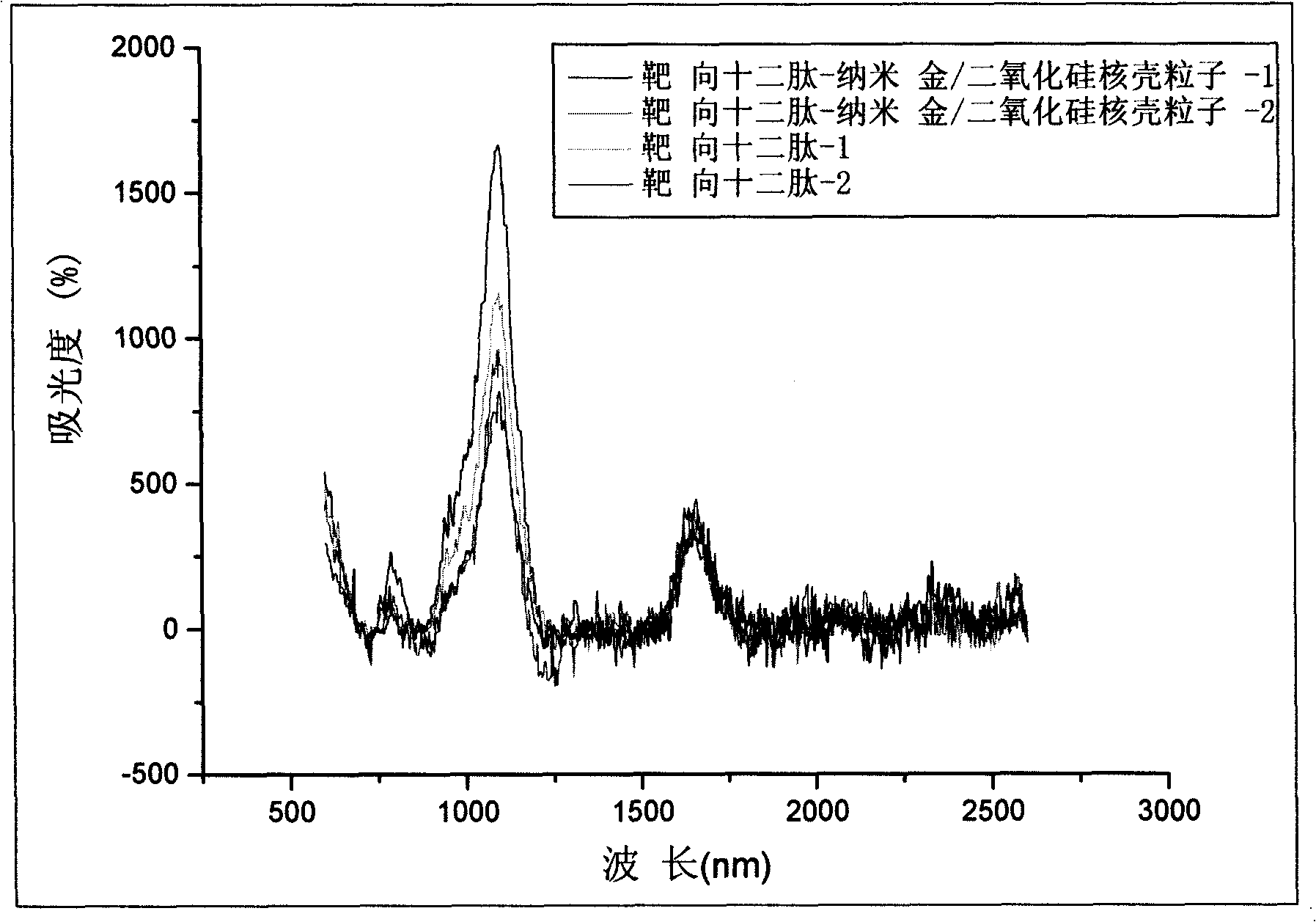Target polypeptide-gold/silicon dioxide nano complex particle and synthesis thereof
A nano-composite particle, silicon dioxide technology, which is applied to inactive components of polymer compounds, drug combinations, digestive systems, etc., can solve the problem of insignificant changes and achieve the effect of enhancing specific targeting.
- Summary
- Abstract
- Description
- Claims
- Application Information
AI Technical Summary
Problems solved by technology
Method used
Image
Examples
Embodiment 1
[0042] Example 1: Synthesis of nano-gold core-shell particles with a particle size of about 180nm
[0043] (1) Synthesis of silica-based cores in core-shell particles
[0044] Add 50mL of absolute absolute ethanol and 3.0mL of ammonia (25%) into a 100mL clean beaker. Under stirring conditions, add 0.2mL (0.9mmol) of 99.999% pure ethyl orthosilicate to the solution. (TEOS), the solution becomes milky white turbid after about 15~30mim, continue to stir for 8h. Silica particles with an average particle diameter of 140 nm were obtained. Measure the surface charge and pH value of the solution with a dynamic light scattering instrument. By adjusting the concentration of ammonia and the amount of TEOS, spherical silica particles with a particle size of 50-300 nm can be synthesized.
[0045] (2) Ammonification of silica surface
[0046] The particle suspension obtained in the above experiment was centrifuged (2000 rpm), the supernatant was discarded, and the precipitate was added with 10 ...
Embodiment 2
[0053] Example 2: Synthesis of targeting polypeptide-gold / silica nanocomposite particles using sulfhydryl-containing amino acids as link arms
[0054] (1) Protection of cysteine sulfhydryl group
[0055] To a 50mL mixed solvent of cysteine (1.21g, 0.01mol) and triethylamine (1.01g, 0.01mol) in dry dichloromethane (DCM) and N,N-dimethylformamide (DMF) (Volume ratio 9:1) Add triphenylchloromethane (2.78g, 0.01mol) dropwise to the middle, under the protection of nitrogen, after 24 hours of reaction, the most of the solvent is evaporated under reduced pressure, and 10mL of distilled water is added to the residue After ultrasonic dispersion, centrifugal separation, discard the supernatant, and vacuum dry the obtained solid to obtain thiol-protected cysteine.
[0056] (2) Introduce the sulfur-containing group-sulfhydryl group into the targeted dodecapeptide through cysteine
[0057] Fix the amine group of the sulfhydryl-protected cysteine (C) on the resin, and use commercial solid...
Embodiment 3
[0060] Example 3: Synthesis of targeting polypeptide-gold / silica nanocomposite particles with sulfhydryl-containing polyethylene glycol (PEG) as the linking arm
[0061] (1) Functional modification of PEG
[0062] The first step: introducing halogenated groups to both ends of PEG. Take PEG2000 (number average molecular weight 2000, 10g, 5mmol) and dissolve it in toluene (250mL), and azeotropically remove water from the oil-water separator. Add freshly distilled pyridine (0.41 mL, 5 mmol) and thionyl chloride (3.54 mL, 50 mmol), and reflux at 75°C for 12 h. Cool to room temperature, remove most of the solvent by rotary evaporation, dissolve in dichloromethane, dry with anhydrous potassium carbonate for 12h, and filter. The collected filtrate was adsorbed and treated with neutral aluminum oxide (20g, activated at 120°C for 2h), filtered, the filtrate was concentrated and precipitated with ether, the precipitate was collected and dissolved in dichloromethane, reprecipitated with ethe...
PUM
| Property | Measurement | Unit |
|---|---|---|
| particle diameter | aaaaa | aaaaa |
| thickness | aaaaa | aaaaa |
| particle diameter | aaaaa | aaaaa |
Abstract
Description
Claims
Application Information
 Login to View More
Login to View More - R&D
- Intellectual Property
- Life Sciences
- Materials
- Tech Scout
- Unparalleled Data Quality
- Higher Quality Content
- 60% Fewer Hallucinations
Browse by: Latest US Patents, China's latest patents, Technical Efficacy Thesaurus, Application Domain, Technology Topic, Popular Technical Reports.
© 2025 PatSnap. All rights reserved.Legal|Privacy policy|Modern Slavery Act Transparency Statement|Sitemap|About US| Contact US: help@patsnap.com



